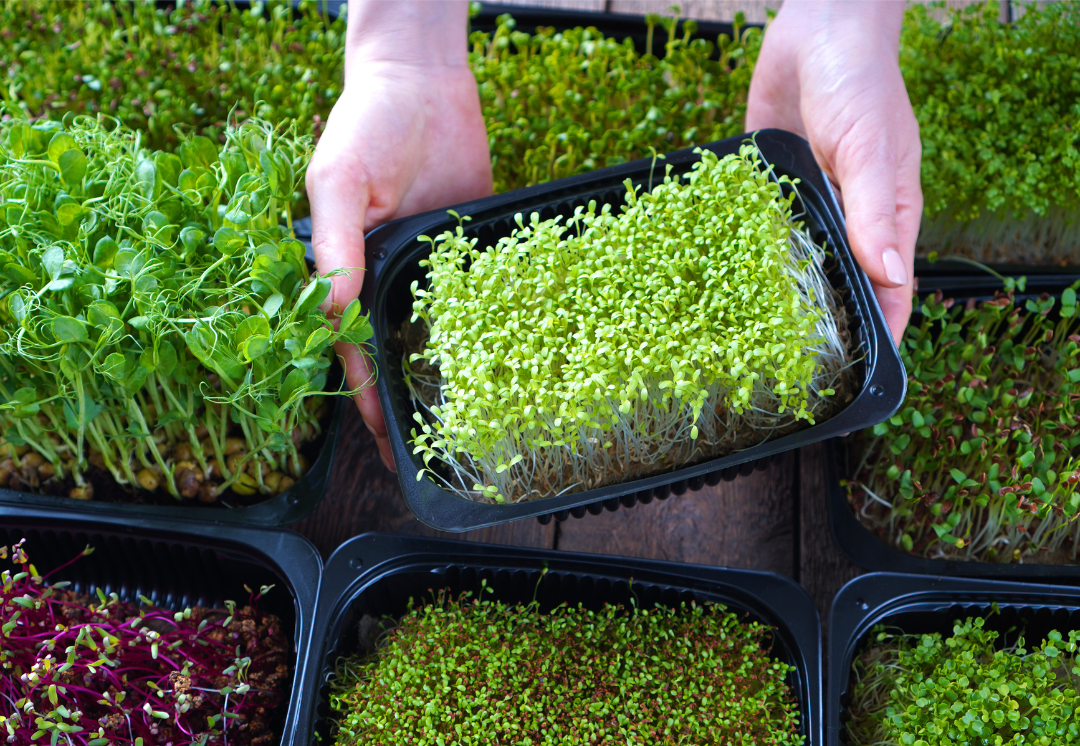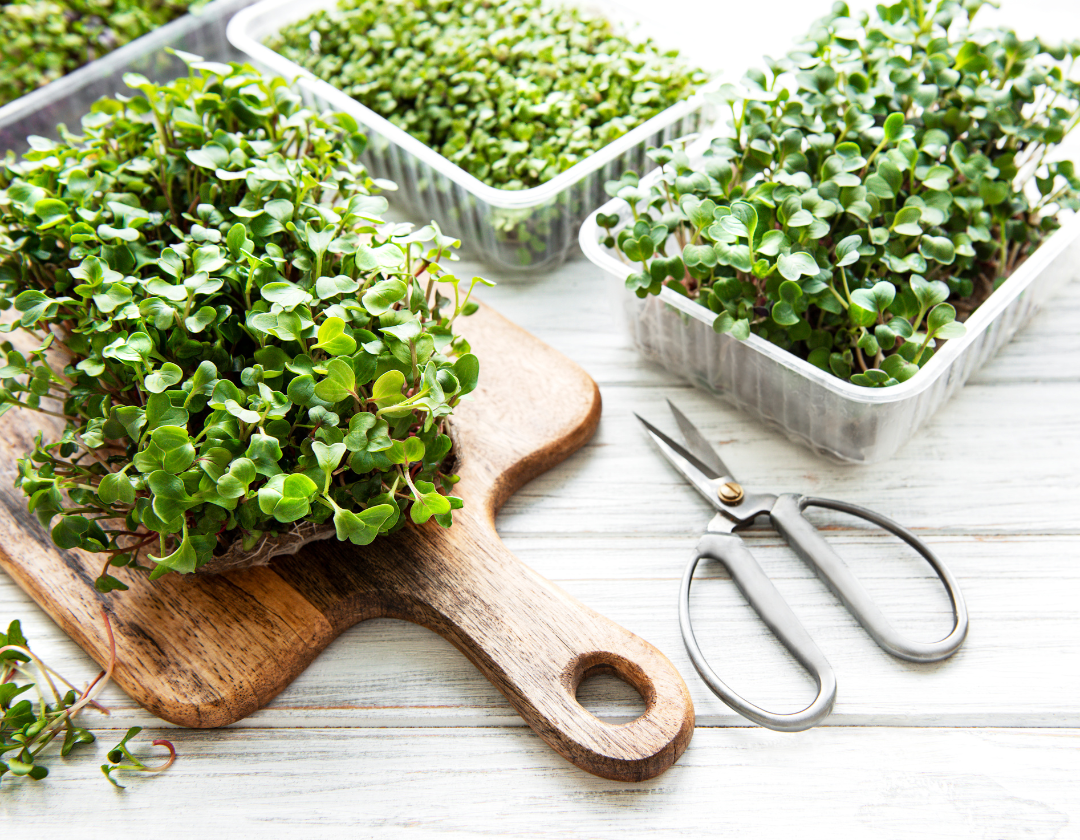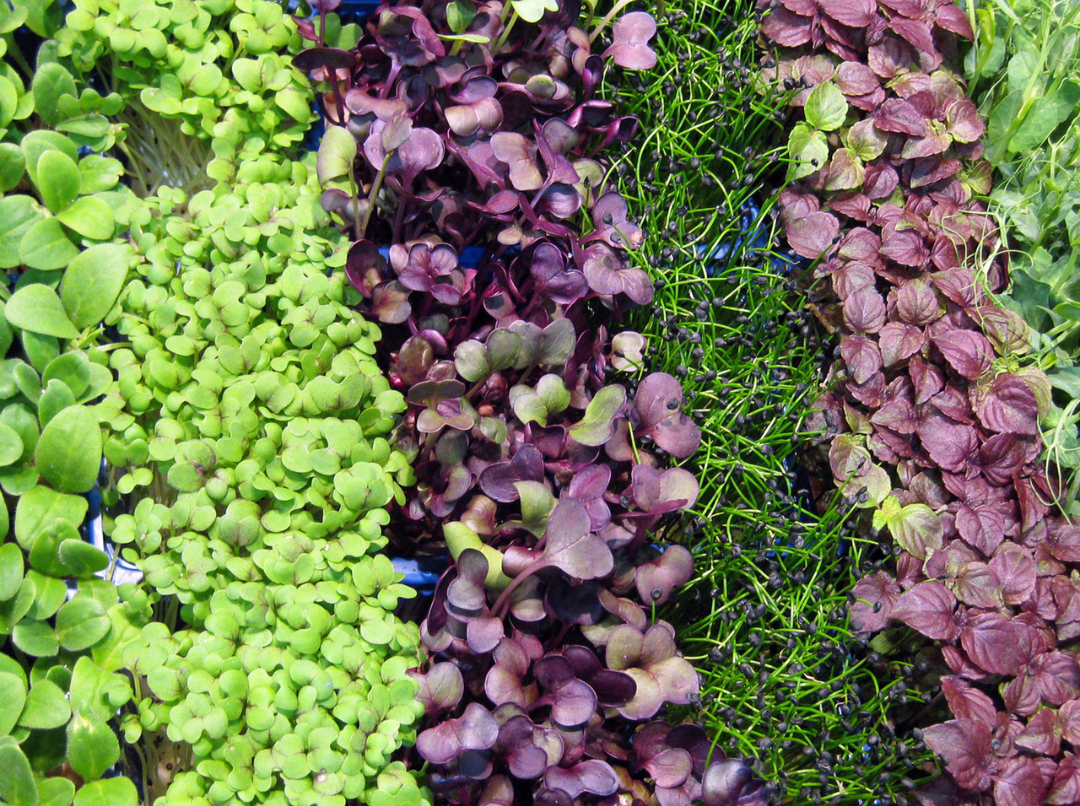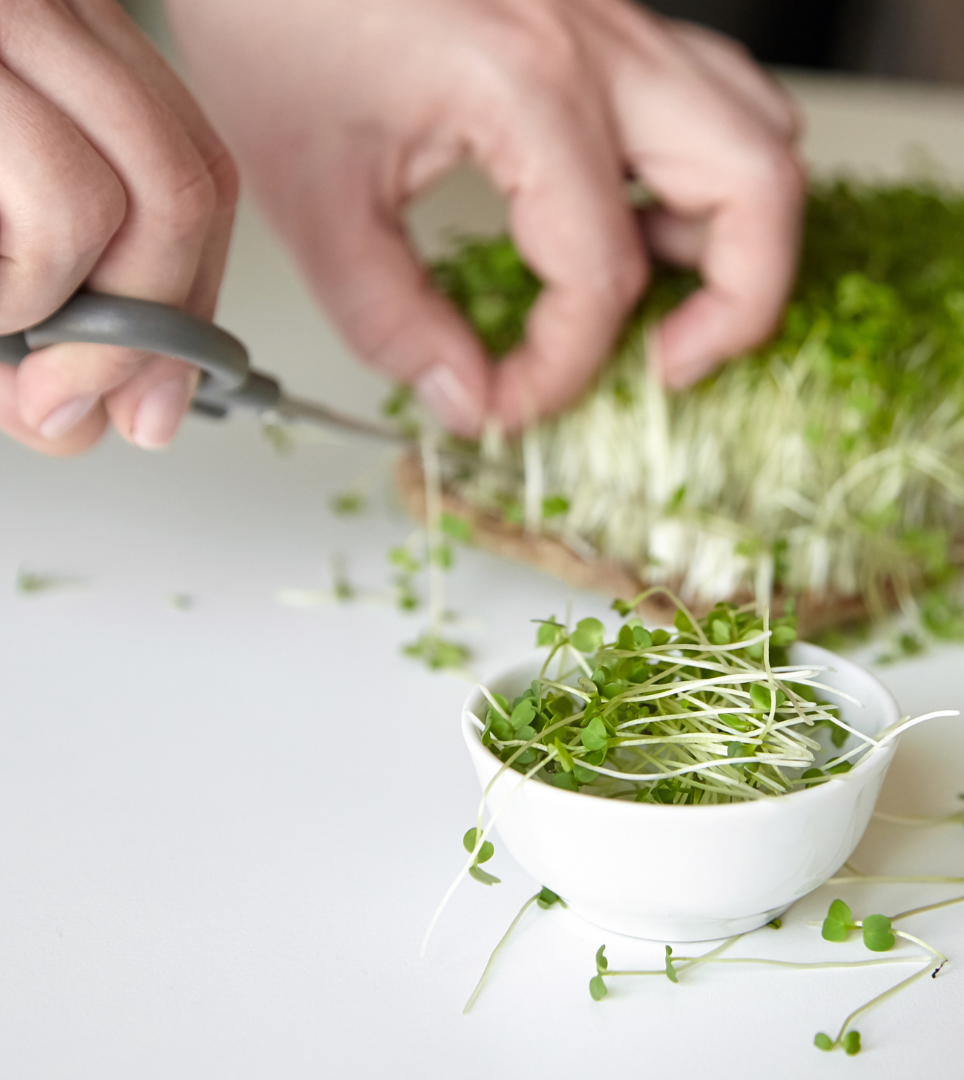Knowing when and how to harvest your microgreens is important knowledge to any grower for a number of reasons. Harvesting too early can lead to a number of negative consequences. Microgreens develop their flavours as they grow, so harvesting them too early means you’ll miss out on the full flavour potential and they might taste bland or underdeveloped. Young microgreens are smaller, and you’ll get fewer leaves to harvest, so harvesting too early means you won’t maximise your crop yield. Microgreens are at their peak of freshness immediately after harvesting. Furthermore, the nutritional content of microgreens increases as they mature and if you harvest them too early, they may not have reached their peak nutritional value. For example, they might have lower levels of vitamins, minerals, and antioxidants.


To avoid harvesting microgreens too early, monitor their growth closely and follow the recommended time frame for the specific variety you are growing. Most microgreens are ready for harvest when they have developed their first true leaves, which usually occurs about 7-14 days after germination. When they are ready to harvest, most microgreen varieties are between 5 and 15 centimetres tall. Although both of these factors vary between different microgreens, the growth period and plant height at harvest of many microgreen varieties are available in the grow guide section of our farm builder. The most important piece of advice to follow is to be patient and wait for your microgreens to reach their optimal size and flavour before harvesting to enjoy the best quality and taste.
Harvesting microgreens incorrectly can also lead to various issues and negatively affect the quality and potential yield of your crop. If you use dull or unsuitable tools, or if you handle the microgreens roughly during harvesting, you can damage the delicate stems and leaves, and this damage may make the microgreens unattractive and less marketable. Failing to properly clean your hands, tools, and containers before harvesting can introduce contaminants, such as dirt, bacteria, or mould, to your microgreens. This can compromise their safety and shelf life. Inconsistent cutting or harvesting at the wrong height can result in an uneven harvest, leaving some microgreens behind while taking others. This can lead to waste and reduced yield. Cutting microgreens too close to the soil or roots can result in a gritty texture and may introduce soil or debris, affecting their flavour and texture negatively.


To avoid these problems, follow proper harvesting techniques, use clean and suitable tools, and pay attention to the growth stages of your microgreens. Keep your workspace clean and sanitary, and store harvested microgreens correctly to maintain their quality and freshness. It’s essential to read up on the specific type of microgreen you’re growing, as different varieties may have slightly different harvesting requirements. However, generally speaking if you follow this guidance your microgreens will be harvested cleanly and safely. Before you start harvesting, ensure that your hands, tools, and containers are clean and free of contaminants. This helps maintain the quality and safety of your microgreens. Carefully cut the microgreens just above the soil level using clean, sharp scissors or a knife. Be gentle to avoid disturbing the roots or soil too much. As you cut the microgreens, collect them in a clean container or tray. You can use a shallow bowl, a plastic container, or a flat tray with a lid. After harvesting, if there is any visible soil or debris on the microgreens, gently brush it off or shake them to remove it. Microgreens are delicate, so handle them with care. Microgreens are best when consumed fresh, but you can store them briefly in the refrigerator to extend their shelf life. Place them in a clean, airtight container or a plastic bag with a damp paper towel to maintain moisture. Store them in the refrigerator’s crisper drawer for up to a few days.
Overall, harvesting microgreens at the right time and with care ensures a more flavorful, nutritious, and visually appealing end product, which is essential for culinary enjoyment and potential sales.